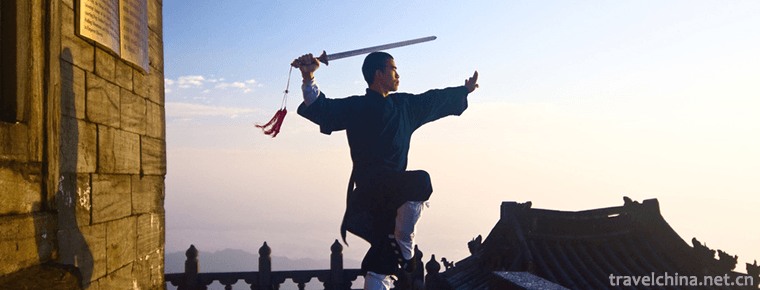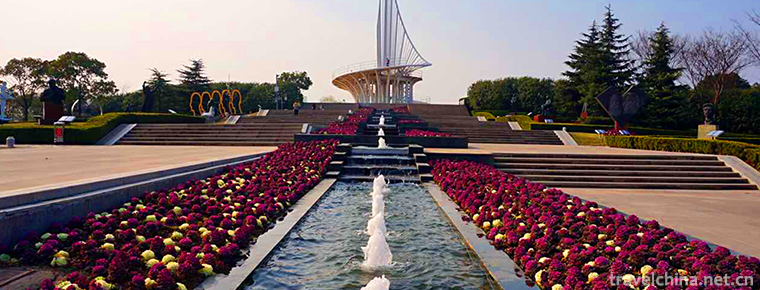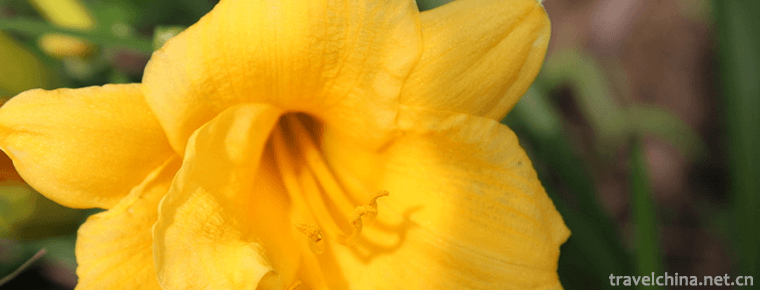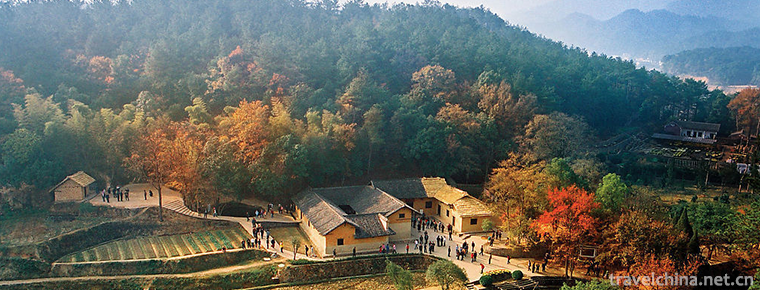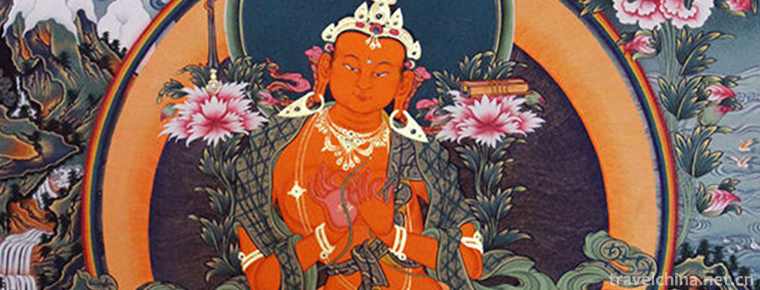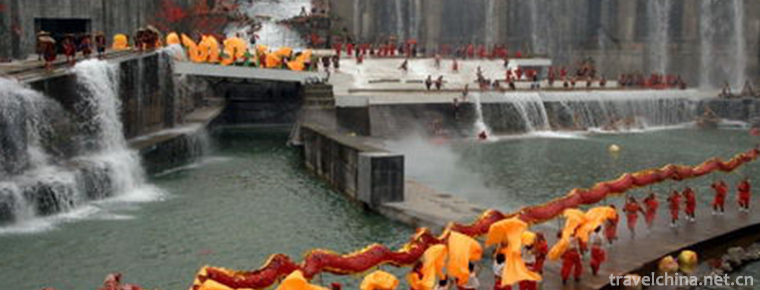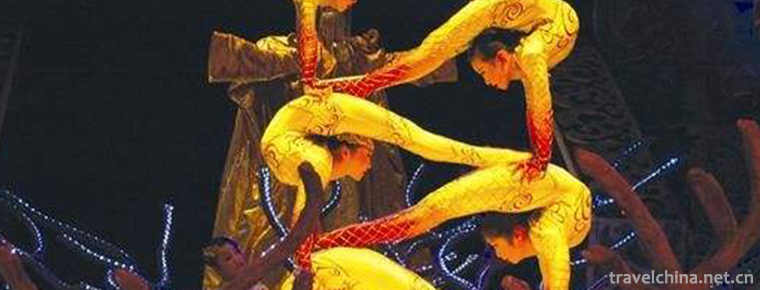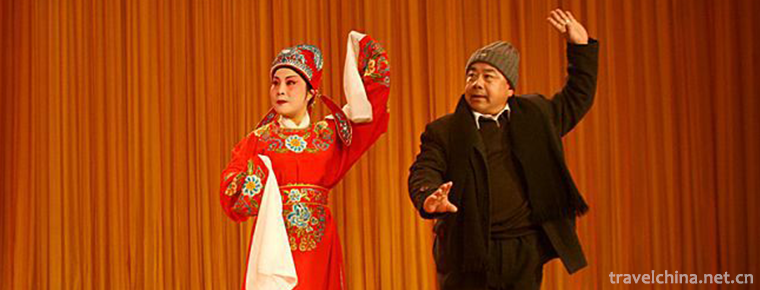Twelve tunes of bronze drum
Twelve tunes of bronze drum
The Buyi bronze drum is one of the ancient percussion instruments of the Buyi nationality, which belongs to the precious national cultural heritage. It is made of bronze, often mixed with Suona, drums, cymbals, cymbals, gongs and sticks, percussion and blow, basically preserving the playing style of ancient musical instruments, with Buyi national characteristics.
On May 20, 2006, the twelfth tune of bronze drum was approved by the State Council and listed in the first batch of national intangible cultural heritage list.
Historical Origin
Cultural tradition
Zhenfeng County is located in the eastern part of the Buyi Autonomous Prefecture in southwestern Guizhou Province. It is a multi-ethnic area, in which there are more than 400 natural villages inhabited by Buyi people. The Buyi nationality has no written language, and the twelve bronze drums are handed down in the family way. They are handed down from generation to generation through oral instruction and heart-to-heart instruction.
According to historical records, the Buyi ancestors began casting bronze drums more than 2000 years ago. Legend has it that the bronze drum was created by the ancient Baiyue "Luoyue" ancestor of the Buyi nationality. Therefore, the Buyi people are regarded as the Heirloom treasure and the symbol of clan and religious unity. They worship gods every year and worship every year. The twelve tunes of Buyi bronze drums are spread in Buyi inhabited areas such as Biandanshan, Dingqi, Dashan, Chengguan, Liuma, Shazi, Liangtian and recruitment townships, and radiate to the surrounding Buyi districts such as Guanling Autonomous County, Liuzhi Special Administrative Region and Puding County, forming a Buyi folk bronze drum cultural circle covering several counties.
The Evolution of Musical Instruments
Because bronze drums and upsetting have a lot in common. For example, they are all faceted, hollow and bottomless, cast in copper. In Vietnam, a small bronze drum of a Buddhist monk in Dongshan, Qinghua, was cast in the center of the drum. The shape of the drum is more similar to that of the tiger button. It is probably the middle form of the evolution of the drum. From the time of its emergence, Bi was earlier than Tonggu. The spring and Autumn period of Bi unearthed in Anhui and Shouxian counties is an example. But later unearthed materials proved that both the drum and the headstock existed in the Spring and Autumn Period. There was no difference between time and time. For Yunnan, where the drum originated, the headstock was discovered relatively late. Only on the bronze silo unearthed from the Shizhaishan ancient tomb in the mid-Western Han Dynasty, the headstock was found hanging with the bronze drum, so the headstock was introduced only after the production of the headstock.
Evolution of skin drum
Li Tiaoyuan, a Qing Dynasty man, said in his book Notes of South Vietnam that in the rainy south, the skin drum was easily damped, so it was cast into a bronze drum. Hess, a Frenchman, said the same thing. In 1890, he speculated in his article "Bronze Drum of North India" that in the first century AD, when China used troops in the south, the drum was easily damaged in wet season, and the Lord would build it. These views are logically inferred and conjectured according to climate factors. They are difficult to establish because of the lack of physical evidence.
Evolution of Sub-kettle
In 1964, a wooden coffin tomb was found in Dabeina Village, Xiangyun County. The funerary objects included a primitive copper drum and a copper kettle. If the copper kettle was put upside down, they were very similar. In 1976, Mr. Feng Hanji, in his article "Research on Bronze Drum Unearthed in Jinning, Yunnan Province", further compares the bronze drum unearthed from the coffin Tomb of Dabona, Xiangyun, with the bronze kettle, and points out that "from the early shape of the bronze drum, it seems to have developed from a practical instrument, the bronze kettle". In addition to the pot kettle unearthed in Dabona, Xiangyun County, ancient tombs of Wanjiaba, Tianzimiao, Chenggong County and Bata Tai, Zhujie, Qujing City were unearthed. The copper kettle was evolved from pottery kettles of the same shape. The pottery kettle for cooking utensils similar to the original copper drum was produced in the Neo-Age. It was still popular in the Bronze Age. Copper kettle was made in imitation of its shape. According to the shape of the kettle, the original copper drum in the early stage was cast.
Kettle drum
This should be the sequence of the origin and development of the bronze drum.
The use of bronze drums by Buyi people has a long history. As early as the Pre-Qin period, the ancestors of the Buyi nationality used the bronze drum, but there was no literature about the bronze drum in this period. However, many scholars believe that the bronze drums of scholars from Shizhai Mountain in Jinning and its adjacent rivers, such as Lijiashan, Wanjiaba in Chuxiong and Dabona in Xiangyun, belong to the "Pupi" nationality of "farming and gathering in cities", which is related to the "Baipu" of the ancient nationality. As for the ethnic origin of the Buyi people, some scholars believe that the source of the Buyi people is the Pu people. Professor Youzhong of Yunnan University believes that the name of the Buyi people in Guizhou contains the word Pu (present Buyi). In Jiang Yingliang's Shuo Pu, there is also a saying that the Buyi people come from the Pu people. Thus, the bronze drums were used by the Buyi ancestors in the Pre-Qin and Western Han Dynasties.
The earliest use of bronze drums by Buyi people can be traced back to the Eastern Han Dynasty, Wei and Jin Dynasty. "Hou Han Shu Ma Yuanzhuan" writes that "Ma Yuan" is a good rider, a good alias for horses, and the bronze drum of Luo Yue is cast in horse style, but also on it. "This is the earliest record of bronze drum in ancient Chinese literature. In the records of bronze drums in the Eastern Han, Wei and Jin Dynasties, it is related to bureaucrats that the clan names are explicitly mentioned. Pei Yuan's Guangzhou Chronicle says "Li Liao Gui Tong Drum". It is noble that counts. Fang Fang was surprised by the vastness of his face. He was suspended in court at first. Kechen liquor attracts similar people, who come to Yingchuan. Among them, the rich children, taking gold and silver as the chains, cling to the drum, bequeath their masters, which is called "Bronze Drum Chai". The Buyi people are descendants of Luoyue, a slang bureaucratic clan. Therefore, the Buyi nationality is one of the earliest people to use the bronze drum.
During the Yuan, Ming and Qing Dynasties, the Buyi people used bronze drums more widely and formed a custom. "Guizhou Tongzhi" records: "Zhongjia... With December as the first year of life, the vulgar bronze drum, hollow and bottomless, always hit for entertainment. The Tu people or dig the land to get drums, that is, Zhang Yanzhuge Wuhou's Tibetan, the rich are scrambling to buy, that is, Bainiu is not hesitant. "Volume 8 of the Gongtu of Emperor Qing Dynasty said again:" Filling cage seedlings,... Scattered in Guiyang, Anshun, Nanlang, Pingyue, Duyun, etc. The prime minister and his wife gathered to play bronze drums and play Lusheng for pleasure. "Qian Miao Poetry" also said that "the custom of filling cages is not suspended, Zhongzi branch color general research. Unique winter snow, bronze drum music New Year in Qi and Laos. "Bulang" is one branch of Zhongjia (Zhongzi Branch). "Zhongjia" is the Buyi people today.
Today, many Buyi villages still retain the custom of using bronze drums. Almost all Buyi villages have a bronze drum.
artistic characteristics
History and Culture
Bronze drum is an indispensable part of Buyi culture. Buyi people call it Anyou. In its long development process, the social function of the bronze drum is constantly changing. The early bronze drums were mainly used as musical instruments and cooking utensils. Over time, the bronze drums became sacrificial artifacts and ceremonies, symbolizing social wealth and authority, and even used as funeral utensils. The Tonggu Tong body is cast in copper and is in the shape of a round pier. The drum face is flat and flat, and the lower part is connected with the drum body. The connecting part is slightly convex outward, with curved waist, hollow, circular open bottom and ears on both sides. The main body of the drum is mostly solar striation, radiating light from the center, surrounded by multi-layer concentric rings, composed of patterns of varying width, known as halos. The decoration of the patterns is colorful. All these decorations show the environmental features of the Buyi people near the mountains and rivers. They have very strong national color and characteristics of the times. These patterns are related to the primitive worship of the Buyi people and depict the things people believe in, worship and appreciate. Like solar, cloud, water ripple, circle and corner ripple, they are closely related to the production and life of the Buyi people. The solar ripple originates from fire worship, water ripple and whirlpool ripple are related to water worship, cloud and thunder ripple originates from heaven worship and thunder worship, tooth ripple is related to mountain worship, triangle and diamond ripple originates from fish worship and evolves from different parts of fish.
Almost every village in Buyi nationality area has one copper drum to several copper drums. Some families share one side, others share several surnames. Usually they are the elders of the clan or preserved by some prestigious families. Chen Zhongheng is one of the few drummers in this village. "Bronze drums are precious treasures of our Buyi people. The bronze drum is the symbol of our nation, symbolizing the unity of the whole nation. This drum in our Chen family is handed down by the elders. According to the old man, this was the war drum of that time. It was used for war. We were in the vanguard when we moved north and marched south. "
The Origin of Bronze Drum
There are different opinions about the origin of the bronze drum. The old man's theory of the war drum is a widely circulated one. During the period of Hongwu in the Ming Dynasty, the bronze drum was made as a war drum when it was transferred to the north and expedited to the south. After the victory of the Southern Expedition, the Buyi people believed that the victory was due to the war drum, so they called it'An You', which means "win drum" in Chinese. Folk also has such a saying, according to legend, in ancient times Buyi people did not have bronze drums, the old people could not go beyond the limit after their death, and they could not invite their ancestors to celebrate the festival together on New Year's Day. A Bujie ancestor, with his courage, wit and filial piety, finally touched the Jade Emperor, and got a bronze drum on the ground. The old man passed away, as long as he knocked on it. With the bronze drum exceeding the limit, the immortal God will receive the old man to heaven as the immortal. When the bronze drum is struck to sacrifice ancestors on New Year's Day, the ancestors will go down to earth to celebrate the festival together, to bless the children and grandchildren safe, the six animals prosperous, and the grain is abundant. Whether it is a war drum or a gift from God, we can see its sacred status in the Buyi people, so there are strict rules when it is used. The bronze drum is sacred to the local Buyi people. When the Spring Festival comes, it will be put out for a month. When it comes out, it will have tribute, such as killing chickens, and taking some knife-heads and bamboo sticks, etc. At the beginning of the New Year's Eve, the first lunar month will be all knocked out, and drums will be hung up every day, one by one. Please go back and seal the drum on the 28th day of the first month. It is not until the autumn harvest or a particularly busy occasion that you can invite them out again.
The Buyi people regard the bronze drum as a spiritual thing. They wear red silk on their ears to suppress evil. Normally, they do not let the bronze drum "see the sky". It will be stored in a grain heap or covered with twelve inches of red cloth.
Bronze drums are only used in celebration occasions such as New Year's Day or "chopping ga" or funeral. When bronze drums are used, a solemn and mysterious ceremony of sacrificing drums is held. The elders of the village led all the men who had established their families and businesses to perform solemn drum ceremony. The elders took the lead in shouting drums handed down from their ancestors. The younger generation echoed the elders and poured out the rice wine of worship in the bowl. The bronze drum is the God drum of the Buyi people. The Buyi people respect it very much. Every year, people come to sacrifice the bronze drum at the same time. Everyone can come and get the tribute ready. First, the old people in the village beat three hammers. The first hammer reveres God, the second one reveres God, and the third one reveres God drum. In this way, God drum will bless the wind and rain.
cultural heritage
The bronze drum is a precious cultural heritage of the minority nationalities in the southwest of China in ancient times. It is also an important part of the brilliant culture of the Chinese people in nanosecond. In the southern, central and western regions of Guizhou, each Dazhai or surname has one or more bronze drums. According to the records, the Buyi ancestors began casting bronze drums before 2000. Since modern times, the bronze drums preserved by Buyi people basically belong to the "Majiang type" bronze drums. The "Majiang type" bronze drums are all made of copper, with a surface diameter not exceeding 50 cm and weighing from 10 to 15 kg. Drum identity chest and foot two sections, including a protruding edge, slant ears with holes, drum surface with sun pattern awn, halo wide, narrow, the main halo decoration "flag pattern", the rest of the most common decorations are "mountain" pattern, inter-awn heart-shaped pattern, foot multi-line angular spinning and so on. The shape of the bronze drum gives people a solemn and dignified feeling.
Composition of twelve tones
Bronze drums are played in twelve tones. The twelve tunes of Buyi bronze drums are composed of magpie tune, scattered flower tune, sacrificial drum tune, ancestor-worship tune, 369 tune, sacrificial tune and festive tune. They are national music expressing Buyi characteristics in ceremonies, ancestor-worship and sacrificial rites. For example, "sacrificial music" has a set of traditional music cards, divided into 12 sections: sacrificial tone, war-aid tone, fire-fighting tone, funeral tone, welcome tone, harvest tone, Carnival tone and so on.
Playing these ancient tunes, often by the bronze drum as the lead, supplemented by leather drums, gongs, bracelets, etc., the melody is strong, affectionate and touching. There are copper drum villages and surnames, some people know the drum tune and can knock. In the eyes of the Buyi people, bronze drums symbolize wealth, power and unity.
Representative Works
"Magpie tune", "scattered flower tune", "sacrificial drum tune", "sacrificial ancestor tune", "369 tune", "sacrificial tune", "festive tune" and so on.
Representative heir
Wang Yongzhan, Yu Duanxue, Yu Yanwei, Cen Xingshun, Yu Tianguo, etc.
Inheritance Significance
historical significance
As an important part of national culture and regional culture, bronze drum has always been associated with Buyi people's life and cultural style. Many ancient musical instruments in Chinese history have disappeared with the changes of the times, but the bronze drum music culture in Buyi region has been inherited and retained to this day. The twelve tunes of bronze drums are a treasure house of rich ancient music works and ancient music information.
Heritage status
The impact of modern economy, technology and foreign culture has led to a rapid change in people's aesthetic style. The bronze drum tune of the Buyi nationality, which has been circulated since ancient times, is rarely known. It is difficult to arouse the interest of young people. The inheritance of the bronze drum tune is in an endangered state and needs urgent rescue and protection.
The state attaches great importance to the protection of intangible cultural heritage. On May 20, 2006, the twelfth tune of bronze drum was approved by the State Council and listed in the first batch of national intangible cultural heritage list.
Protection initiatives
Southwest Guizhou and Zhenfeng County attach great importance to the excavation, protection and inheritance of Buyi's "twelve tunes of bronze drums". A lot of money has been invested in the construction of Xiangsanchahe Tonggu Culture Square and Fengmao Tonggu Culture Square in the county town. It has also set up a bronze drum music culture ecological protection villages such as Nayang Village and Duemenshan Village, and set up a bronze drum music culture performance team of the Buyi nationality, rehearsing the bronze drum music and dance programs with the theme of bronze drum music culture such as "Twelve Tunes of Bronze Drum", "Bronze Drum Encouragement" and "Buyi Harvest Dance", and in the annual "March 3" and "June 6" plots of the Buyi nationality. And the Buyi Ancient Song Competition and other national festivals and competitions.

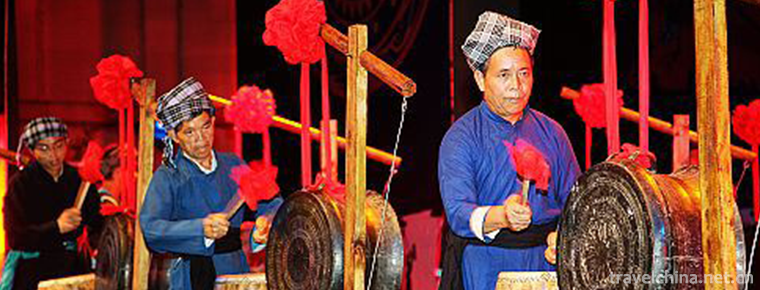
-
Shanghai
People's Republic of China municipality directly under the central government.
Views: 268 Time 2018-10-12 -
Wudang Mountains Scenic Area
Wudang Mountain, the holy place of Taoism in China, is also known as Taihe Mountain, Xieluo Mountain, Shenshan Mountain and Xianshi Mountain. It has been called "Taiyue", "Xuanyue".
Views: 169 Time 2018-12-12 -
Shanghai Oriental land
Located in Qingpu District, Shanghai, Oriental Green Boat is the only large park in Shanghai that integrates outreach training, youth social practice, team activities and leisure tourism. Near the sce.
Views: 189 Time 2018-12-20 -
Jiulong Mountain Rural Tourism Scenic Area
Mianzhu Jiulongshan Rural Tourism Scenic Area is located in the northwest of Mianzhu City, Sichuan Province. It is a characteristic rural tourism area.
Views: 138 Time 2018-12-22 -
Hainan Tropical Wildlife Park and Botanical Garden
Hainan Tropical Wildlife and Botanical Garden is a national AAAA-level tourist attraction with the theme of popular science exposition, conservation and reproduction, sightseeing, leisure and vacation.
Views: 249 Time 2019-01-13 -
Mao Zedongs former Residence
Comrade Mao Zedong's former residence is located in Shaoshan Village, Shaoshan Township, Shaoshan City, Hunan Province. It is located in the South and north of Shaoshan Village.
Views: 154 Time 2019-02-07 -
Tibetan astronomical calendar
Tibetan astronomical calendar is the study of Tibetan people living on the Qinghai-Tibet Plateau for generations. Under the special natural geographical and climatic conditions of the plateau.
Views: 135 Time 2019-04-15 -
Dujiangyan Drainage Festival
The Qingming Drainage Festival is a traditional festival in Dujiangyan, Sichuan Province. Every year during the Qingming Dynasty, Dujiangyan City welcomes the annual Qingming Drainage .
Views: 233 Time 2019-04-28 -
Wuhan acrobatics
In the 20 years of Qingdaoguang (1840), folk acrobats from Tianmen, Wuyang and other places in Hubei came to Wuhan to perform, and then gradually formed a class club to enter the stage. Folk artists s.
Views: 153 Time 2019-06-30 -
Yihuang Opera
Yihuang Opera, formerly known as Yihuang Ban and Yihuang Diao, is one of the national intangible cultural heritage in Yihuang, Nancheng, Nanfeng and Guangchang counties of Jiangxi Province, as well as.
Views: 333 Time 2019-07-12 -
Anhui University Of Traditional Chinese Medicine
Anhui University of Chinese Medicine is located in Anhui. Jiangnan Labial teeth, Huai right A famous historical and cultural city called "the throat". Hefei For Anhui higher education revita.
Views: 115 Time 2019-11-07 -
Population of Guangan
At the end of 2019, the total registered residence of Guang'an was 4 million 593 thousand. Among them, the rural population was 3.424 million, the urban population was 1.169 million, the birth population was 47900, and the death population was 5310.
Views: 244 Time 2020-12-19

